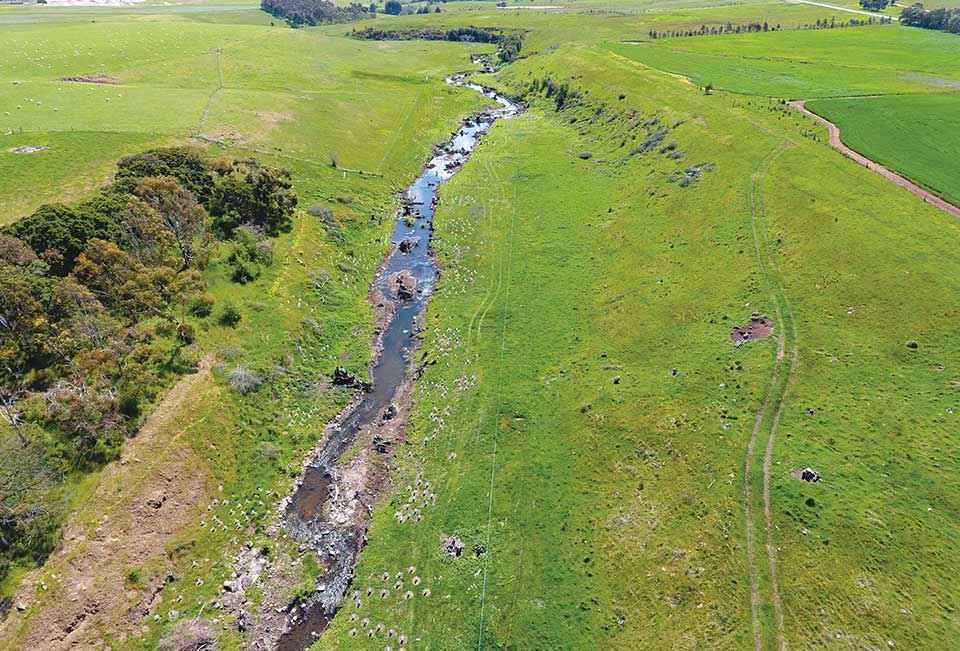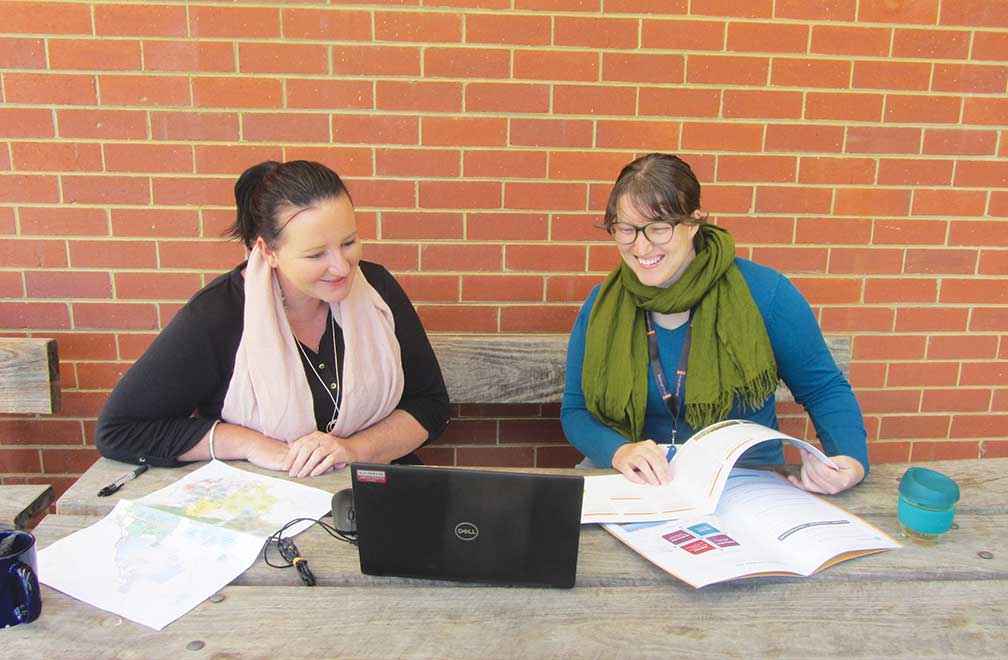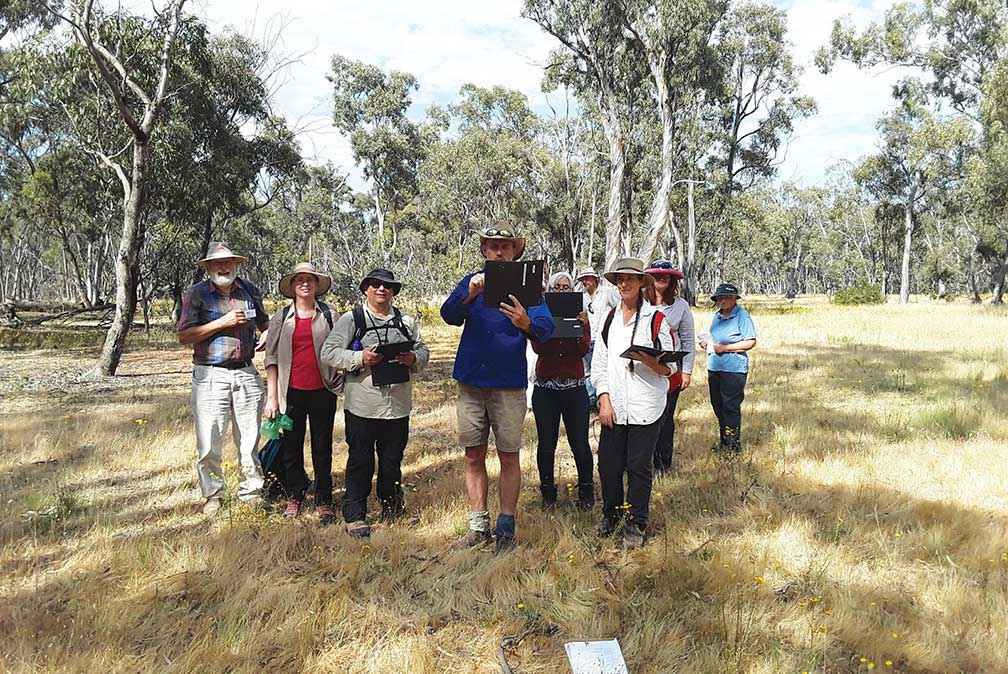Victorian Landcare Magazine - Winter 2022, Issue 84

Applying for funding is challenging and time consuming. It is also one of the most important administrative activities that groups and networks do. Without grant funding many of the Landcare projects that are improving the health of our environment and our communities just wouldn’t go ahead.
I’ve had experience on both sides of the grant fence – as a grant applicant and as an assessor. I’ve read hundreds of applications and trawled through countless sets of guidelines, eligibility criteria and assessment guidance notes in order to promote grant opportunities to Landcare groups, farmers and other environmental volunteers.
Let me share with you some of the wisdom, challenges and repeat offences I’ve seen over the years, which I hope increases your groups chances of success with your next grant submission. I’ll be referring to the notion of a project here, but it may be that you’re seeking funding for an idea, a plan, an initiative, a program or a trial.

Above: Krista England (left) from North Central CMA and Mount Alexander Shire region’s Intrepid Landcare Coordinator Asha Bannon work together on an online grant application.
When you come across a grant round, or perhaps you’ve been approached by invitation, read the summary information, the opening paragraphs of the funding guidelines and the objectives section very carefully.
Ask yourself if your project really aligns to the objectives of this funding stream.
If the wording is confusing, there is a lot of jargon and unfamiliar acronyms, or it makes you question if the project fits into the objectives of the funding body, you may already have the answer.
It’s important to go carefully through the details. Each time a grant opportunity closes funding bodies are swamped with applications from ineligible organisations, for ineligible activities, with unrealistic budgets and timeframes. I can only encourage you to head straight to the eligibility criteria and assessment questions section.
Funding bodies aim to be clear, targeted and transparent about what their funding can go towards and who is eligible to receive it.

Above: The Loddon Plains Landcare Network’s mapping workshop was supported by a Victorian Landcare Grant.
Before you even begin a first draft, pick up the phone and speak with the grant manager. Talking through your project, its alignment to the funding, the budget and delivery timeframes with the person managing the process can be incredibly helpful. It will either spur you into action to begin drafting the application or save you a lot of time and hassle. There are no silly questions.
• Be project ready. Don’t wait for a particular funding stream before your group documents its ideas for projects, starts to record indicative quantities for materials, and forms the relationships necessary for project success.
• Write as though no one else knows what your project is about. Ensure you link to strategies, action plans, best practice and relevant research.
• Grants are increasingly only available through online applications. Computer literacy is a necessary skill. Draft the project offline first. Use a cloud-based document sharing system that will ensure the document is saved and can be viewed, reviewed, edited and commented on by other group members.
• If an online grant system doesn’t allow you to view the whole application form, ask for a PDF from the grant manager.
• Create a realistic, itemised and conservative budget. Check if quotes are needed and factor the time to obtain quotes into the application period.
• Check what permission you require for your project. Landholder signatures or in-principle letters of support from land managers may be needed. Touch base with everyone involved and advise them of the timeframes. Permission (in principle) is not a green light. Contacting the farmers and public land managers again once you are funded is essential.
• Funding bodies often ask for in-kind contributions. Don’t sell yourselves short. The volunteer hours and other contributions to a project are valuable and often influence whether a grant application is successful.
• The time between application, assessment, notification and funding contracts can be weeks or even months. Factor this into the delivery timeframes for your project so you’re not caught short, especially for seasonal activities.
• If your application is successful read the notification letter and associated documentation carefully. Some grant programs encourage recipients to undertake promotion and publicity around the grant announcement, while others can require ministerial involvement or a corporate launch before things get started.
• Remind the people committed to the project of their roles, responsibilities and obligations. A shared calendar of action, working backwards from the reporting deadline, can help people visualise what needs to happen and when.
• Record what’s happened and where, as you go. If knowledge of your grant progress is only held by one member it creates a burden on other volunteers if they are incapacitated and can’t see the project through. There is risk to the group’s reputation if things come unstuck at reporting time.
• Acquittal and final reporting can feel like more work once the project is complete, but it is also an opportunity
to tell the story of the project. Prepare for this part of the process and embrace it. It’s also an opportunity for the group to celebrate what has been achieved.
• Grant managers love clear, factual and timely reports. If allowed, include photographs, promotional material, flyers, social media posts and other attachments that showcase your work.
• We know things don’t always go to plan, especially given Landcare projects are working with nature. If a project takes an unexpected turn, or gets offtrack, call the grants manager and work it through. It’s not ideal to use your reporting template to surprise the funding body with news that aspects of a project were not delivered.
Landcare work is vital and valuable. The funding we have available to do the work isn’t always able to stretch as far as we need it to. The simple truth is that many good projects don’t get funded, however grant managers have many connections and can often push unfunded projects towards other opportunities, so spending time preparing a great submission is rarely a waste of time.
Tess Grieves is Regional Landcare Coordinator for the North Central CMA.
For more information email tess.grieves@nccma.vic.gov.au